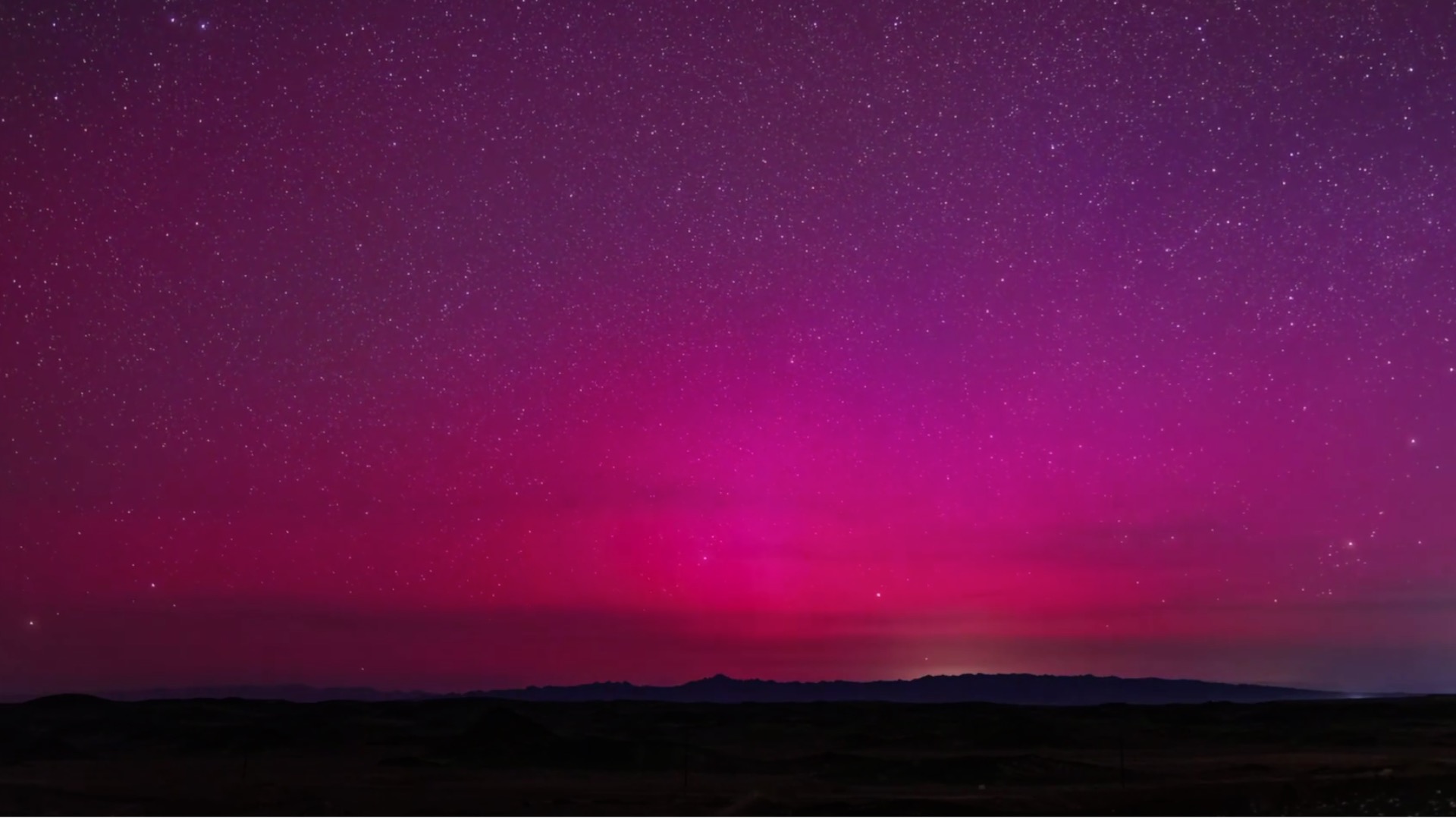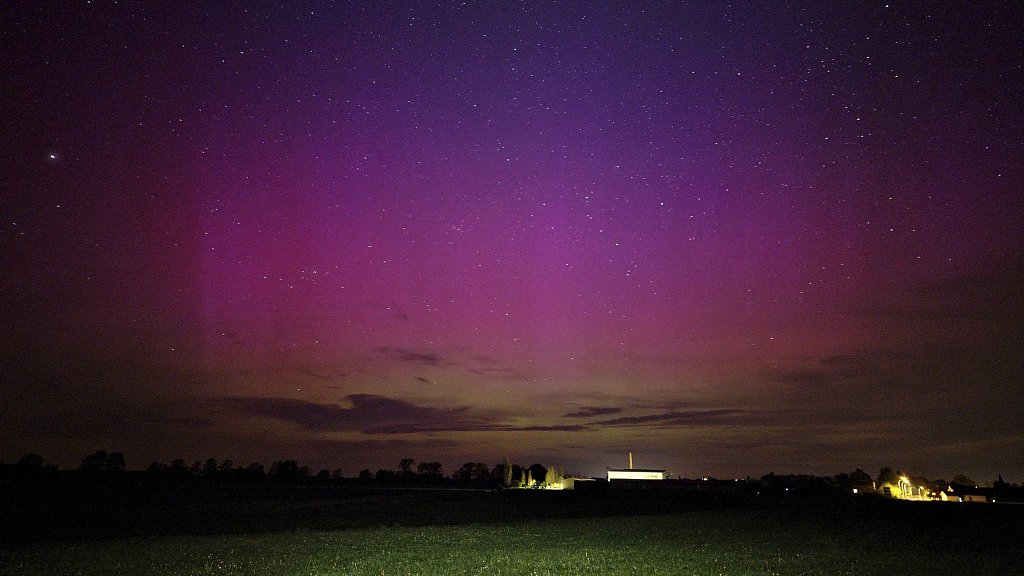00:56

A rare aurora burst that produced a meteor shower was spotted in Karamay City, northwest China's Xinjiang Uygur Autonomous Region, on Monday.
The impressive view was caused by a potent geomagnetic storm that happened from 2:00 a.m. to 8:00 a.m. Beijing Time, according to China's National Center for Space Weather (NCSW).
The Earth's magnetic field underwent a strong disturbance, triggering the strongest geomagnetic storm since the 25th solar activity cycle.
People in Europe, North America and other mid and high latitudes also witnessed the dazzling scenery from this atmospheric phenomenon.

Auroras appear in the night sky above a small village in Havelland, Brandenburg, Germany, April 24, 2023. /CFP
Auroras appear in the night sky above a small village in Havelland, Brandenburg, Germany, April 24, 2023. /CFP
"We're going to see a lot more activities like this in the next several years because we're going to be in the maximum phase of the sunspot cycle," Bill Murtagh, program coordinator for the U.S. National Oceanic and Atmospheric Administration's Space Weather Prediction Center, was quoted as saying by the Washington Post.
One effect caused by a geomagnetic storm is that it can aggravate the movements of the particles in the Earth's upper atmosphere, driving them to spread out into higher space. That can cause more resistance for spacecraft flying in space.
The massive geomagnetic storm this time may have caused the orbit of China's Fengyun-3G, a satellite dedicated to measuring precipitation on Earth, to drop by about 560 meters, said the NCSW.
Auroras, or commonly known as polar lights, are colorful illuminating lights that usually appear in the high-latitude regions. They are caused by the interaction of energetic particles of the solar wind with the Earth's atmosphere, which are closely related to solar activities. Therefore, more spectacular aurora displays can be seen during the maximum phase of solar activities, even in many lower-latitude regions.